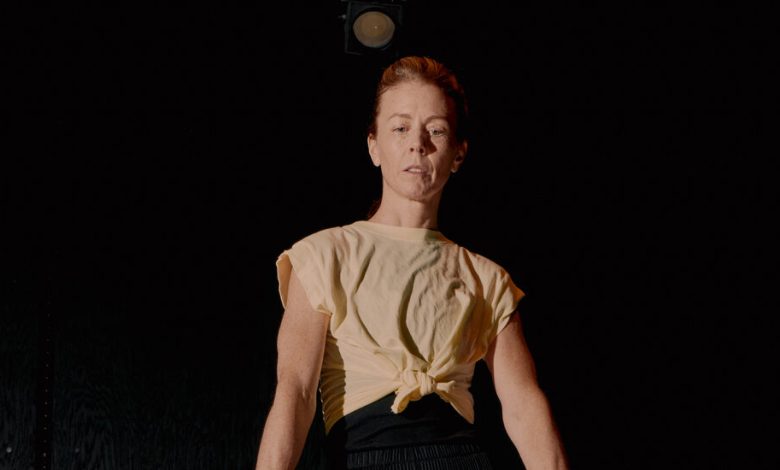Jean Butler Choreographs the Past and Future of Irish Dance

Halfway through Jean Butler’s “What We Hold,” the audience is invited to sit at a long table surrounded by 50 chairs, as if at a wedding banquet. Instead of place settings, three dancers are before them. As the audience settles in, voices begin to float through the room, like snatches of lost conversations.
“Dancing was the poor man’s game, you know,” says one recorded voice. Another: “It was like he was telling you a story with his feet.” As the voices recall the past, the three dancers enact a kind of ritual. First, they stand casually. Then, with great precision, they slide a foot forward, pointing their toes. Their postures change — shoulders back, heads high, arms straight at their sides, hands in loose fists. A transformation happens: They are not just dancers but Irish dancers.
“That’s the very first thing we learned as kids, that posture,” Butler said after a rehearsal. It is something all Irish dancers hold in their bodies, like first position in ballet.
For fans of Irish dance, Butler — one of the dancers on the table and the creator of the show, which is at the Irish Arts Center tomorrow through March 3 — represents the epitome of the genre. As a star of “Riverdance,” she delighted audiences with the clarity, delicacy and airiness of her dancing. And it is because of that show, which premiered in 1995 and continues to tour, that perceptions about Irish dancing changed; it became something it had never been seen as before: exciting, even sexy.
Butler walked away from all that in the early 2000s and remade herself as a contemporary dancer and choreographer, working in an introspective, pared-down, almost minimalist mode. Now, after years of investigating a different way of moving, she has returned to Irish dance with “What We Hold,” this time through a different, more inquiring lens.
We are having trouble retrieving the article content.
Please enable JavaScript in your browser settings.
Thank you for your patience while we verify access. If you are in Reader mode please exit and log into your Times account, or subscribe for all of The Times.
Thank you for your patience while we verify access.
Already a subscriber? Log in.
Want all of The Times? Subscribe.
